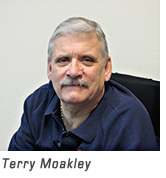 I just finished a 13-day hiatus at my local VA Spinal Cord Injury Center for treatment of a summer cold that turned into pneumonia. Fortunately, I got through it unscathed but minus a few pounds. I’ll take it.
I just finished a 13-day hiatus at my local VA Spinal Cord Injury Center for treatment of a summer cold that turned into pneumonia. Fortunately, I got through it unscathed but minus a few pounds. I’ll take it.
One has a lot of time to think when hospitalized. For instance, I thought about being born six months before the end of World War II. Before that time and the concurrent development of antibiotics, most people who became spinal cord injured did not live too long. Since my injury happened during the Vietnam era, it made me feel grateful that I’m a C-6 quad who is still alive 45 years post-injury.
There are many other vets living with spinal cord injuries (SCI) who I’ve known for these 45 years who, like me, are still on the planet. This didn’t just happen willy-nilly. In fact, United Spinal Association’s history, which goes back to 1946, is a testament to its many leaders over the years who have pushed the Department of Veterans Affairs to improve SCI care. And I think that they have been very successful.
Here’s a couple of examples. I was in an eight-bed room when I arrived at my local SCI Center in 1967. Uh, there was no privacy, period. But in my recent pneumonia hospital stay, I shared a room with just one other patient; and when my roomie got a bit worse, I was getting better so I was moved to my own room.
When I was there in ’67, I remember three doctors taking care of nearly 100 vets with SCI. Today, there are six physicians for perhaps 65 to 70 inpatients. One can actually talk to one’s doctor every day and to the physician on duty on weekends.
The same increases in the number of nurses, nursing assistants, psychologists and social workers are to be found at my VA SCI Center as well. But perhaps the biggest positive change that is most significant to me is in the physical, occupational and corrective therapy that is available.
Back in ’67, one had to have an able-bodied escort take you to the physical therapy area because it was as far away as possible from the two SCI wards. The occupational therapy clinic was a schlep, too, but not quite as distant as PT. Today, the SCI Service at my VA has its own therapy building right next to the SCI unit, and plenty of good and enthusiastic therapists to help vets with spinal cord injuries learn how to become as independent as possible. They even have a therapist working now on Sundays.
Bottom line, a VA Medical Center is still a hospital and nobody really wants to be there. But, over the years that I’ve been a quadriplegic, United Spinal Association has advocated consistently and successfully to make my VAMC a better place to be well cared for, and to insure that the health professionals who provide this care locally and around the country are aware of the latest advances in treatment and care.
This advocacy has resulted in many men and women veterans with SCI leading lives of achievement, satisfaction and well-being. Let’s keep it moving forward.
Terry Moakley
Chair of the VetsFirst Committee
Further Reading:
